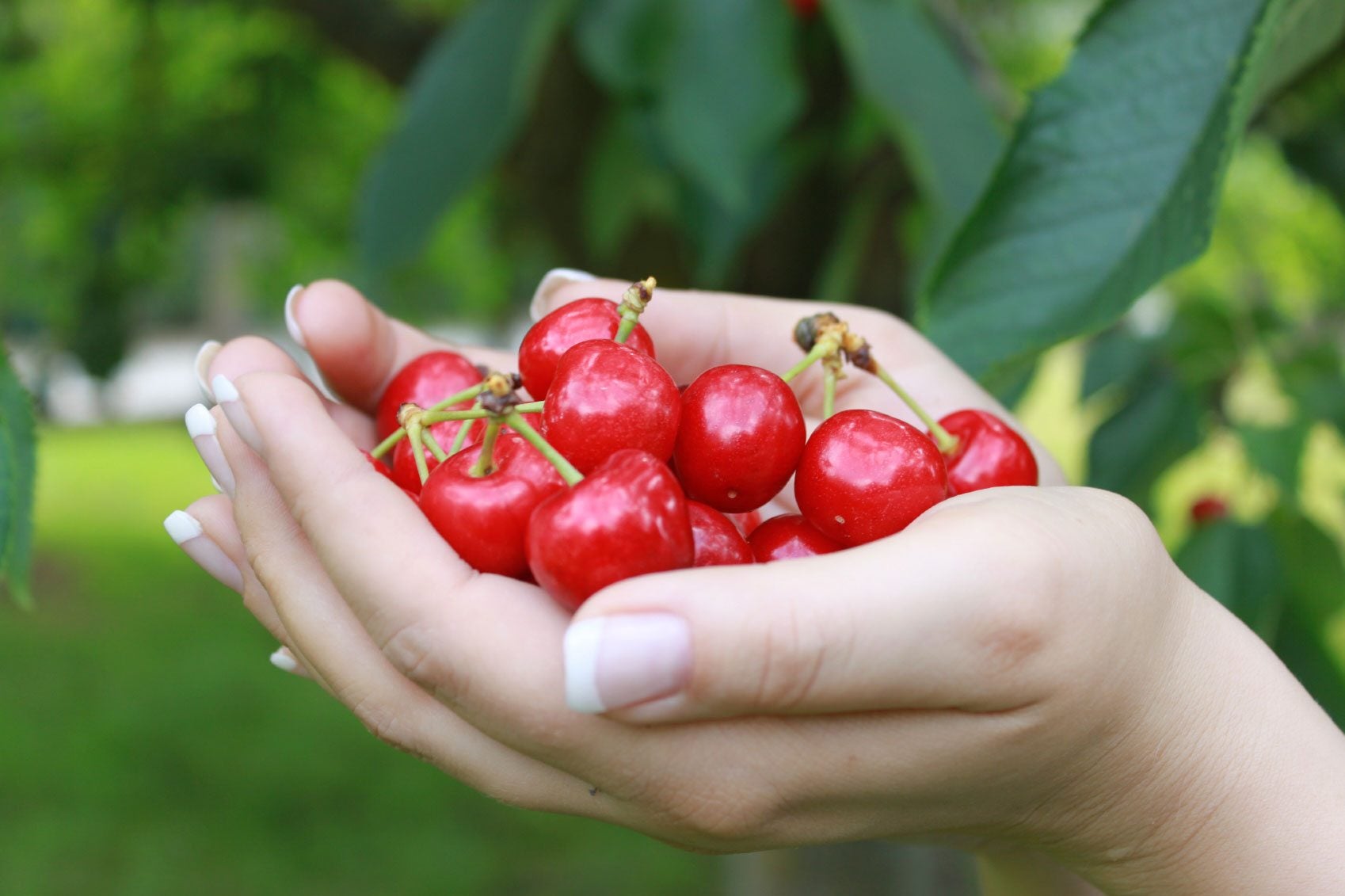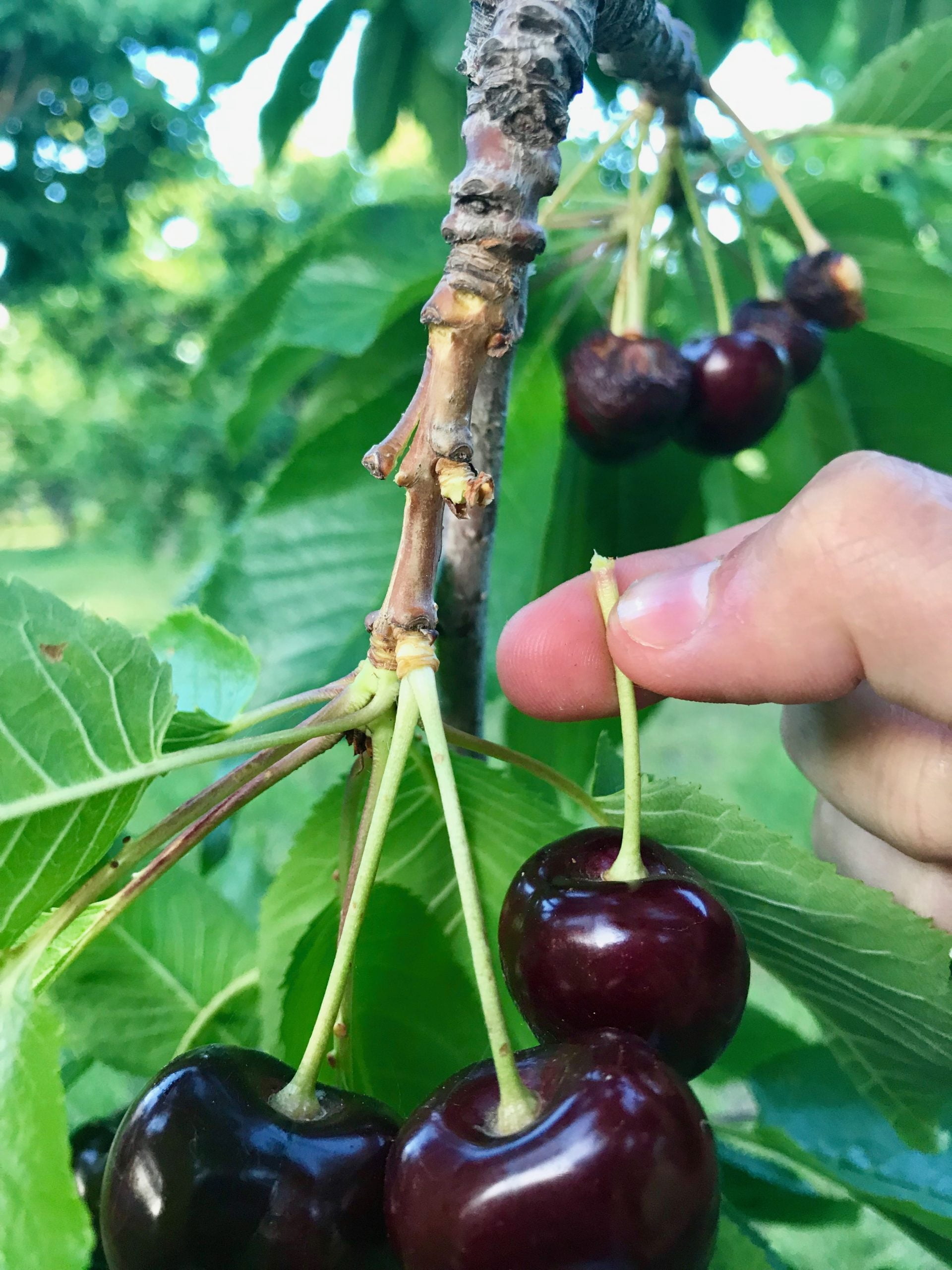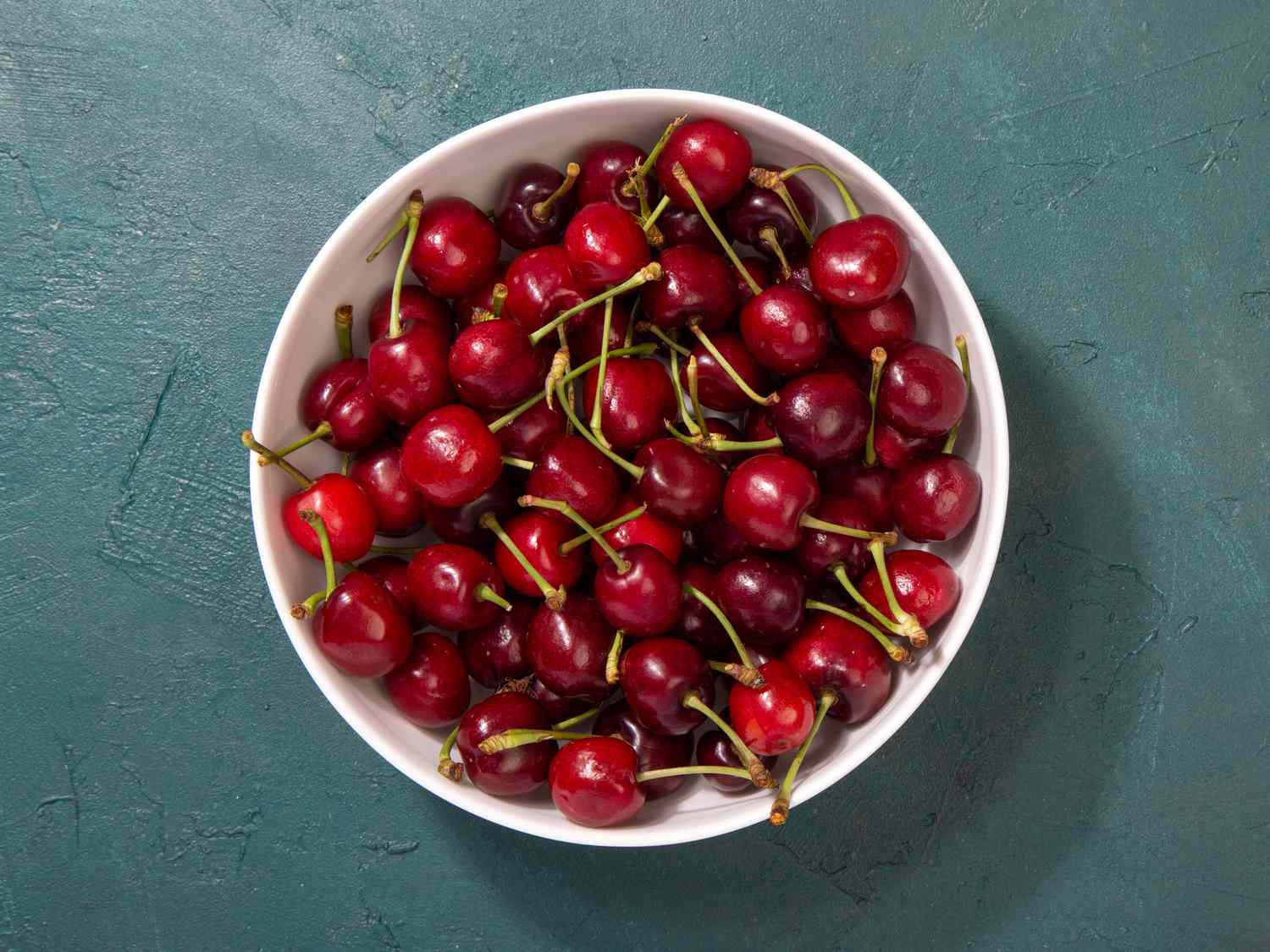Cherries, a delicious and vibrant fruit beloved by many, hold a special place in the culinary world. As the warm summer days approach, the question of when these delectable fruits reach their peak ripeness and are ready to be harvested arises. Understanding the optimal time for cherry harvesting is crucial for growers and consumers alike, ensuring the sweetest, juiciest cherries make their way onto our plates. In this article, we will explore the factors that determine the harvest time for cherries, providing valuable insights into the fascinating world of cherry cultivation.

Factors Affecting Cherry Harvest
Cherry harvest is influenced by several factors, including climatic conditions, cherry variety, growing region, and cultivation practices. These factors play a significant role in determining the quality and quantity of the cherry harvest.
Climatic Conditions
Climatic conditions, such as temperature, precipitation, and sunlight, greatly impact the cherry harvest. Cherries thrive in temperate regions with cool winters and mild summers. The ideal temperature range for cherry trees is between 32 to 45°F during the dormant period and around 75°F during the growing season. Adequate rainfall is essential, especially during the fruit development stage, while excessive rain or humidity can lead to fruit damage or disease. Sufficient sunlight exposure is also crucial for cherry trees as it promotes fruit growth and enhances flavors.
Variety of Cherries
Different varieties of cherries have varying maturity periods, which affect the timing of the harvest. Early-season cherries typically ripen and are ready for harvest earlier in the season, while mid-season and late-season cherries require more time to mature. There are numerous cherry varieties available, each with its unique characteristics and flavor profiles. Growers often select specific cherry varieties based on their target market, growing region, and desired harvesting timeframe.
Growing Region
The geographical location of the cherry orchard significantly influences the cherry harvest season. Cherries are cultivated in various regions worldwide, and each region has its own optimal climatic conditions for cherry production. For example, areas with a Mediterranean climate, like California and southern Europe, tend to have a longer growing season, enabling the production of late-season cherries. On the other hand, regions with colder climates, such as Washington state or Hokkaido, Japan, primarily focus on early and mid-season cherry varieties.
Cultivation Practices
Cultivation practices, including pruning, irrigation, fertilization, and pest management, play a crucial role in cherry harvest. Proper pruning helps maintain tree health, shape, and improve fruit quality. Adequate irrigation is essential to meet the moisture requirements of the cherry trees, especially during dry periods, to prevent stress and fruit dehydration. Optimal fertilization provides the necessary nutrients for tree growth and fruit development. Effective pest and disease management protocols are vital to control potential threats that could impact the cherry crop yield and quality.
Cherry Harvesting Season
The cherry harvesting season is divided into three main categories: early-season, mid-season, and late-season cherries. Each season has its own set of cherry varieties, harvest timeframe, and ripeness indicators.
Early-Season Cherries
Early-season cherries are the first to ripen and be harvested. These cherries typically have a softer texture and a delicate flavor. Some popular varieties of early-season cherries include Burlat, Chelan, and Black Pearl.
Mid-Season Cherries
Mid-season cherries follow the early-season cherries and have a slightly firmer texture and a sweeter taste. Varieties such as Rainier, Lapins, and Tulare are commonly harvested during this period.
Late-Season Cherries
Late-season cherries ripen towards the end of the season and are known for their firmness, rich flavors, and intense color. Bing, Sweetheart, and Stella are among the popular late-season cherry varieties.

Early-Season Cherries
Early-season cherries offer an enticing start to the cherry harvest season. Understanding the varieties, harvest timeframe, and ripeness indicators is crucial for successful harvesting.
Varieties of Early-Season Cherries
There are several varieties of early-season cherries, each with its own unique characteristics and flavors. Some of the commonly grown early-season cherry varieties include:
Burlat: Known for its intense sweetness and deep red color, Burlat cherries are one of the earliest to ripen. They are delicate and have a short shelf life, making them highly sought after by cherry enthusiasts.
Chelan: Chelan cherries have a slightly tart flavor and are a vibrant dark red color. They have excellent firmness, which makes them suitable for transportation and storage.
Black Pearl: With their deep black skin and sweet flesh, Black Pearl cherries are visually striking. They are known for their excellent texture and flavor, and they are often used in gourmet recipes or enjoyed fresh.
Harvest Timeframe
Early-season cherries are usually harvested in late spring or early summer, depending on the growing region and climatic conditions. The exact timing may vary slightly from year to year due to weather fluctuations, but growers typically monitor the fruit closely to determine the optimal harvesting window. As soon as the cherries reach the desired level of ripeness, the harvest begins to ensure peak flavor and quality.
Ripeness Indicators
Determining the ripeness of early-season cherries can be done through visual and tactile indicators. Ripe cherries will have a vibrant color, usually deep red or black, depending on the variety. The fruit should feel firm yet yield slightly to gentle pressure when squeezed. Noticeably soft or mushy cherries may indicate overripeness or decay. The stem should be green and firmly attached to the fruit, without any signs of wilting or detachment.
Mid-Season Cherries
Mid-season cherries offer a wider selection of flavors and textures, and they are generally available during the peak of summer. Understanding the varieties, harvest timeframe, and ripeness indicators is important for a successful harvest.
Varieties of Mid-Season Cherries
The mid-season cherry category boasts an array of popular varieties, each with its own distinct characteristics. Some notable mid-season cherry varieties include:
Rainier: Rainier cherries are highly prized for their unique coloration, featuring a pale yellow to golden skin with a pinkish-red blush. They have a sweet and creamy flavor, making them a favorite for fresh consumption and dessert preparations.
Lapins: Lapins cherries have a dark red to almost black skin and a juicy, sweet flavor. They are known for their excellent firmness and are often favored for eating fresh or used in cooking.
Tulare: Tulare cherries are dark red with a slight tartness. They have a crisp texture and are suitable for both fresh eating and processing, making them a versatile choice for growers.
Harvest Timeframe
Mid-season cherries are typically harvested in the summer, usually a few weeks after the early-season cherries. The exact harvest timing depends on the region and the specific variety being grown. Growers closely monitor the cherry orchards, regularly checking for signs of ripeness. Once the cherries have developed their characteristic color and appropriate sweetness, they are ready for harvest.
Ripeness Indicators
When determining the ripeness of mid-season cherries, visual and tactile assessments are key. The cherries should exhibit their characteristic coloration, whether it be golden, red, or dark burgundy, depending on the variety. Gentle pressure should yield a slight give, with the fruit feeling firm and plump. Overly soft cherries or those with wrinkled skin may indicate overripeness or potential spoilage. The stem should be green and firmly attached, without any signs of shriveling or detachment.

Late-Season Cherries
Late-season cherries offer the grand finale to the cherry harvest season. These cherries are known for their robust flavors and firm textures. Understanding the varieties, harvest timeframe, and ripeness indicators is crucial for successful harvesting.
Varieties of Late-Season Cherries
Late-season cherries encompass a range of delicious varieties, each with its own unique characteristics. Some prominent late-season cherry varieties include:
Bing: Bing cherries are large, deep red cherries with a rich flavor and firm texture. They are often considered the epitome of cherries, beloved for their sweetness and versatility in culinary applications.
Sweetheart: Sweetheart cherries are distinguished by their heart-shaped, deep red skin and sweet, crisp flesh. They are known for their excellent flavor and firmness, making them a popular choice for fresh eating.
Stella: Stella cherries have a dark red to almost black skin and a sweet-tart flavor. They are prized for their firm texture and are commonly used for canning, baking, or enjoying fresh.
Harvest Timeframe
Late-season cherries are harvested towards the end of the cherry season, typically in mid to late summer. The exact timing can vary depending on the growing region and the specific variety being grown. Growers carefully monitor the cherries, ensuring they reach optimal maturity before harvesting. Late-season cherries tend to have a longer harvest window compared to early and mid-season varieties, allowing for a more extended period to gather the crop.
Ripeness Indicators
To determine the ripeness of late-season cherries, visual and tactile cues should be assessed. The cherries should display their characteristic deep red to black color, depending on the variety. When gently squeezed, they should feel firm and plump, with minimal give. Overripe cherries may feel overly soft or mushy, while underripe cherries will be firmer and potentially sour. The stem should be firmly attached, and the cherries should be free of any signs of shriveling or blemishes.
Mechanical Harvesting
Mechanical harvesting refers to the use of specialized equipment to harvest cherries. While mostly employed for large-scale commercial operations, it has both advantages and disadvantages worth considering.
Advantages of Mechanical Harvesting
Efficiency: Mechanical harvesters can quickly and efficiently harvest large quantities of cherries, significantly reducing the labor required.
Cost-effectiveness: By decreasing the reliance on manual labor, mechanical harvesting can save on labor costs, which can be substantial for larger cherry orchards.
Consistency: Mechanical harvesting can ensure a more uniform picking process, leading to consistent fruit quality and reduced potential for damage.
Disadvantages of Mechanical Harvesting
Fruit Damage: Mechanical harvesters, if not properly adjusted or operated, may cause damage to the fruit, leading to bruising or splitting.
Selectivity: Mechanical harvesters may have difficulty distinguishing between ripe and unripe cherries, potentially resulting in the collection of underripe or overripe fruit.
Harvesting Techniques
Mechanical harvesting relies on specialized machinery designed to shake the cherry trees, dislodging the ripe fruit. The most commonly used method is known as “tree shaking,” where a mechanical shaker grips or encircles the trunk and vibrates rapidly to shake the cherries loose. Once loosened, the cherries either fall onto catching frames or are directed into conveyors for further processing.

Hand Picking
Hand picking, also known as manual harvesting, involves the physical labor of individuals selectively picking cherries by hand. While it requires more labor-intensive efforts, it offers certain advantages for specific situations.
Advantages of Hand Picking
Quality Control: Hand picking allows for precise selection, ensuring only ripe and undamaged cherries are harvested, leading to superior fruit quality.
Gentle Handling: By hand picking, cherries can be delicately plucked from the tree, minimizing the risk of bruising or other physical damage.
Selectivity: Skilled pickers can selectively harvest for ripeness, leaving unripe fruit on the tree to mature further, thus optimizing the overall harvest.
Disadvantages of Hand Picking
Labor Intensive: Hand picking requires a significant amount of manual labor, which can be time-consuming and costly, particularly for larger orchards.
Cost: The labor-intensive nature of hand picking makes it more expensive compared to mechanical harvesting, primarily due to the higher labor costs involved.
Harvesting Techniques
Hand picking typically involves a team of skilled workers equipped with ladders, buckets, or handheld picking tools. They carefully ascend the ladders or position themselves beneath the tree canopy, selectively picking ripe cherries and placing them gently into containers. Attention to detail and skillful picking techniques are crucial to minimize damage and ensure the integrity of the harvested fruit.
Post-Harvest Handling
Proper post-harvest handling is vital to maintain the quality and freshness of harvested cherries. This includes temperature and storage conditions, sorting and grading, as well as packaging and transportation considerations.
Temperature and Storage Conditions
Cherries are highly perishable fruits and require specific temperature and storage conditions to maximize post-harvest longevity. The ideal storage temperature for cherries is around 32 to 34°F (0 to 1°C) to slow down the ripening process and maintain fruit quality. High humidity levels, typically between 90% to 95%, help prevent dehydration and maintain the cherry’s juiciness.
Sorting and Grading
Sorting and grading cherries is essential to categorize them based on their size, color, ripeness, and overall quality. This process helps ensure consistent product standards and improves marketability. Cherries are typically sorted by mechanical systems that utilize cameras and sensors to assess various quality parameters, including size, color, and any visible defects. The sorted cherries are then graded into different quality categories based on these parameters.
Packaging and Transportation
Cherries are primarily packaged in ventilated plastic containers or clamshell packaging to protect the fruit during transportation and maintain freshness. The packaging should provide adequate ventilation to prevent condensation and maintain optimal humidity levels. Additionally, the packages should be securely sealed and properly labeled to facilitate traceability and compliance with regulatory requirements. During transportation, cherries must be handled with care to minimize jostling or unnecessary movement that could lead to bruising or damage.

Common Challenges in Cherry Harvesting
While cherries can be a lucrative crop, several challenges may arise during the harvest period that can impact yield and overall success.
Weather Events
Unpredictable weather events, such as droughts, heavy rains, hailstorms, or late-season frosts, can significantly impact cherry production. These events can cause reduced crop yields, fruit damage, or even complete crop loss. Cherry growers must closely monitor weather forecasts and implement appropriate measures, such as additional irrigation or protective covers, to mitigate the potential effects of adverse weather conditions.
Pests and Diseases
Cherry trees can be vulnerable to various pests and diseases, including cherry fruit fly, birds, aphids, fungal diseases, and bacterial infections. These pests and diseases can damage the fruit, affect the tree’s overall health, and reduce crop yields. Growers must implement comprehensive pest management strategies and disease control measures, such as regular monitoring, proper pruning to improve tree airflow, and targeted pesticide applications, to minimize damage and ensure a healthy harvest.
Labor Shortage
Cherry harvesting is a labor-intensive process that requires a significant workforce. Unfortunately, labor shortages can pose challenges for growers, primarily due to the physically demanding nature of manual harvesting and the scarcity of available skilled labor. To address this issue, some growers are turning to innovative technologies, such as automation or mechanization, to assist with harvesting tasks. Improved labor management practices, incentives, and training programs are also being implemented to attract and retain skilled workers in the industry.
Conclusion
Cherry harvesting is influenced by various factors, including climatic conditions, cherry variety, growing region, and cultivation practices. Understanding the specific requirements for each cherry season, whether it be early, mid, or late, is crucial for successful harvesting. Mechanical harvesting and hand picking are the two primary methods employed, each with its advantages and disadvantages. Proper post-harvest handling, including temperature control, grading, packaging, and transportation, ensures the preservation of cherry quality. However, challenges such as weather events, pests, diseases, and labor shortage can impact the cherry harvest. By implementing appropriate strategies and best practices, cherry growers can overcome these challenges and achieve a successful and bountiful harvest.



